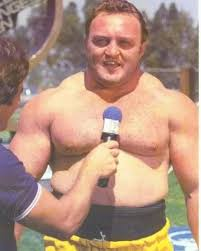Welcome, yet again, to the DnD World fellow physical transformation nerds. Herein I will continue the saga started a while back where I make hamfisted analogies between DnD and nutrition. In this post, I will discuss how nutrition and training relate to the notion of our character stats, which, for the uninitiated, basically described the general attributes that make us who we are. Whereas class determines what we do for a living and race determines our ethnic background (which, in turn, can influence what we have an affinity toward, and aversion against, and other qualities, ultimately being an appropriate representation of “genetics”), the stats are the point black numerical representation of where we stand in the world. Allow me a quick crash course and then an explanation of where this is headed.
 |
| Inevitably, it's always this |
There are
six core stats in the world of Dungeons and Dragons: Strength (my obvious
favorite), Dexterity, Constitution, Wisdom, Intelligence and Charisma. For a quick rundown, strength is obvious, and
will impact how much damage you do with melee weapons, whereas dexterity
impacts ranged weapons along with your general ability to move swiftly/steal
stuff/etc. Constitution is like
endurance/hardiness/hard-to-kill-ability.
For the best ever explanation of the last three: intelligence is knowing
that a tomato is a fruit, wisdom is understanding that you shouldn’t put tomato
in a fruit salad, charisma is understanding that you can sell a tomato fruit
salad as salsa. Intelligence is knowing
stuff, wisdom is being able to actually apply the stuff you know, and charisma
is about emotional intelligence and being able to navigate/manipulate
people. And here’s what else you need to
know: stats range typically range from 3-18 for a newly created character, with
3 being the absolute worst you could be at something and 18 being the absolute
best, traditionally indicating that a “newly minted” person in the DnD world is
all 10s down the board: completely average.
So now let’s talk about HOW we can those stats to range from 3-18 vs
simply walking around as straight 10s down the board.
There are 2
primary ways to determine your stats in DnD: you can “roll a character”, which
you’ve most likely heard the term before, or you can employ a “point buy”
system. In the case of the former,
traditional/hardcore rules dictate rolling 3 six sided die (3 d6, if you wanna
know the hardcore lingo) and whatever those numbers add up to: that’s your
stat. You can see how 3-18 happens
now. A kinder/gentler approach is to
roll FOUR six sided die and take the best 3 of those 4 rolls. In either case, you do this for a total of 6
times, and then plug the results into your stats. There are even more homerules approaches to
this, but we’ll cap it off there for now, because this is already going to get
way too wordy. Point buy, on the other
hand, is a system wherein you are allotted a fixed amount of total points to
spend across the 6 stats. It removes
randomness from the equation and creates a more “fair” character creation
process. Worth appreciating is that, as
stats get higher, they require more points spent to increase the stat (like,
going from 10 to 11 strength only costs 1 point, whereas going from 17 to 18
costs 3, for an example). Already THAT
is an excellent metaphor for training, and how, the more advanced you become,
the harder you have to work to get the gains that used to come so easy at the
beginning, but perhaps I’ll save that for another blogpost. Worth appreciating is the fact that the
Dungeon Master will ultimately decide HOW many points you could to play with:
if they want you to have a high power campaign, you get a lot of points,
whereas a low level campaign will be few points.
 |
| You laugh until you realize these are YOUR party members... |
Now, all
THAT established…what the hell does it have to do with nutrition? Because, in the realm of physical
transformation, nutrition is what DETERMINES your “stat pool”. Irrespective of if you are doing point buy or
rolling a character, your nutrition determines what NUMBERS you have to play
with. But what makes us roll a character
vs point buy? Nuance and approach,
fundamentally. Many MANY trainees are
employing a “roll a character” approach in the hopes of scoring a whole bunch
of 18s with some random luck, but if these folks want a predictable and fair
approach, they need to engage in some point buying. Allow me to explain.
When I was
young, I definitely was rolling stats as far as my nutrition went. My focus was on food QUANTITY. I was operating under the premise that, as
long as I ate ENOUGH of it, I was BOUND to eat the right stuff to trigger the
physical transformation I required. I
watched the scale as my feedback for my success, and saw my bodyweight climb up
as I pounded away all the fast food, yummy sugary treats, blender bombs,
gainers, PBJs and quick fixes I could get my hands on. It was an approach of pure randomness that I
had convinced myself was logical and intelligent: as long as I kept my protein
high, I was bound to be building muscle, and all that other food was going to
provide me energy to fuel training and the metabolic functions necessary to
promote growth. And this is not that
much further away from If It Fits Your Macros, operating under the premise
that, as long as you hit specific benchmarks and milestones of nutrition,
you’re going to get the results you desire.
 |
| I was taking some nutritional cues from this dude...in his 2008 era of nutrition |
As I wrote:
this is randomness. It’s rolling 3 die
and hoping they end up all 6s. Maybe
they will…and maybe it’ll be all 1s.
Because, unfortunately for you, there IS nuance when it relates to this
whole “human biology” stuff, and what you eat DOES have a determining impact on
the outcome you receive. Calories
in/Calories out may determine bodyWEIGHT outcomes, but it does NOT determine
body COMPOSITION outcomes. And along
with that, WHAT we eat can even impact BOTH the calories in AND calories out
portion of the equation: foods we cannot actually properly digest due to
intolerances among other issues will not factor into our “calories in” despite
our counting of it, and some nutrients are going to have a thermic effect that
actually contribute to their own “calories out” portion of the equation, to say
nothing of the impact of surplus energy sometimes unconsciously impacting our
own non-exercise activity thermogenesis (NEAT).
And then, from there, we can discuss the impact of spiking insulin
frequently with sugary food intake vs the impact of a fat based diet, the
influence of being in a fat adapted/ketogenic state vs a sugar burning state,
the myriad of hormone responses in the body, etc. This isn’t to say that calories/energy/macros
DON’T matter, but to say that OTHER things ALSO matter…which brings us to point
buy.
With point
buy, the randomness is taken away from the equation. This is what one hopes to accomplish with a
more nuanced nutritional approach. And
look: you already know I’m big on carnivore, but at least you ALSO know I’m big
on it BECAUSE of the research and personal experimentation I’ve done in order
to come to this conclusion over MANY decades of playing around with my
nutrition. In the same way, I fully
support people with a mixed diet, a vegan diet, a flexible diet, etc etc, so
much as they have taken the time to consider BEYOND merely their caloric and
macronutrient needs when determining WHAT to put into their body. Because nutrition DOES have more to it than
that…at least, if our goal is to have a solid stat pool to pull from as far as
physical transformation goes. By going
deeper and understanding the hormonal impact of food, the influence of
micronutrients and minerals, the impact digestion plays and our ability to
actually ABSORB the nutrients we are consuming, avoiding our own personal food intolerances,
etc etc, we allow ourselves to remove randomness from the equation and to be
able to have a much more stable stat pool to draw from.
 |
| I get how you 90s kids think random is always best |
And, in
turn, we absolutely have the opportunity to achieve some 18s: it’s just not
going to happen accidentally. It will be
focused and achieved through legit hard work and research. Stan Efferding is a fantastic example of
someone who took the effort to play in a high level campaign with their stat
points, along with folks like Thomas Delauer, John Meadows, John Berardi, etc. Can you Sam Sulek, Dave Tate, Randall
Strossen, Paul Anderson, Hugh Cassidy your way to victory as well, by simply
relying on the notion that quantity is a quality in and of itself? For sure: randomness is always an option,
especially in the realm of DnD, but what IS worth appreciating is that even
those aforementioned people at least had a method to their madness. None of them were simply relying on an app to
tell them what their “goals” were: many were at least mindful enough to have a
theory to their approach to nutrition.
And once we
have our stat NUMBERS, it is training that determines stat ALLOCATION. Yes, if you train to get stronger, you’ll be
able to take that high number you either rolled or saved up points for and put
it in strength. You spend your time on
mobility, it goes to dexterity. Spend it
on endurance, it goes to constitution.
Etc etc. But the key takeaway
here is this: training determines ALLOCATION: it does not determine
AMOUNT. The actual stat NUMBERS you get
to play with are a product OF that nutrition.
You can train as hard as you want: if the nutrition isn’t there to
actually give you a high stat pool, you’re just going to take your highest
crappy stat and put it into one of your attributes. So congrats: you now have a 12 in strength
instead of a 10. Play a high level
campaign and you’ll have a MUCH better character to play.
Although sometimes you SWEAR they were cheating when they made their character...
Roll a
character or point buy: the decision is yours.
But, in real life, you don’t’ get a mulligan on your die rolling: what
you roll is what you roll. Do you really
wanna risk being all 10s and 8s in your pursuit of an 18?












